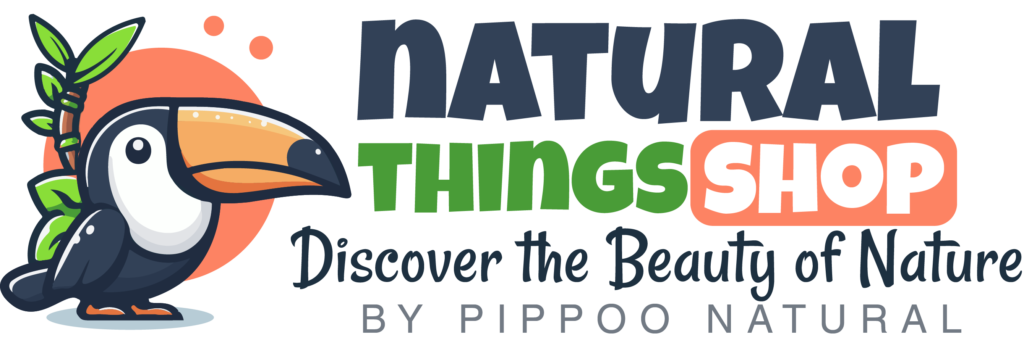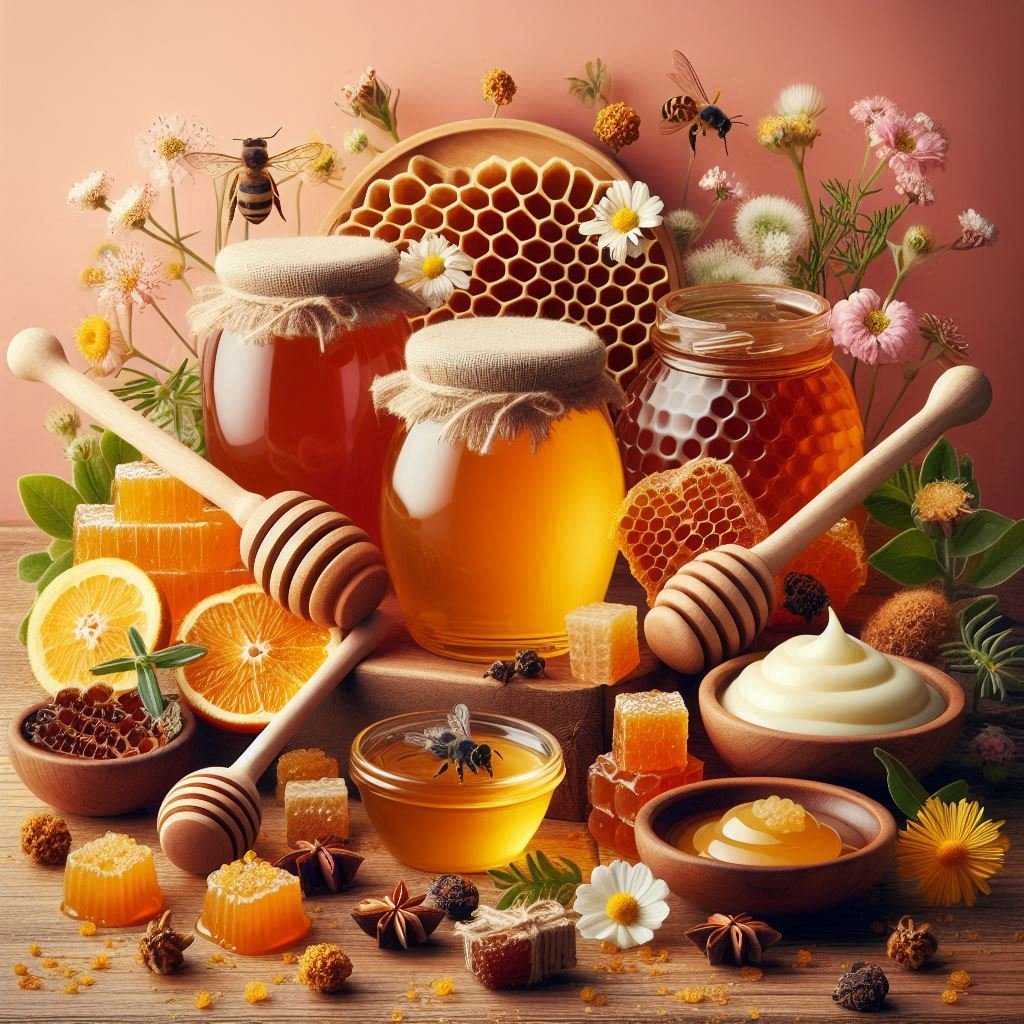How Honey and Bee Products Can Improve Your Health: An Expert Guide
This article will be about honey, jelly royal, propolis and pollen. We will discuss its benefits to our health.
Honey
Honey is beneficial for stomach and intestinal disorders; it helps heal ulcers in the stomach and duodenum, as well as external wounds. It is also good for rheumatism, heart, lung, liver, and skin diseases. This is great food benefits arteriosclerosis, nervous disorders, and anemia. It serves as a remedy for both constipation and diarrhea. Consuming honey rejuvenates and keeps the body vigorous. Due to its medicinal properties, honey is a necessary food for all age groups, from infants to the elderly.
Genuine honey starts to crystallize about 4-5 weeks after being harvested from the hive. Frozen honey has fine crystals, while honey with large crystals is of lower quality. Some types of honey may not crystallize. The most valuable honey is harvested in the spring and summer, and it should be preferred for medicinal use. Autumn honey, on the other hand, is less medicinally effective.
- Chewing a chickpea-sized amount of propolis and the same amount of beeswax with honey clears blockages in the blood vessels of the mouth and nose.
- Applying honey to varicose ulcers, gangrene wounds, mouth sores, boils, and inflamed wounds on the skin is healing.
- Honey can be used as an ointment for the eyes and eye sores, as a mouth cleanser, and as a blood vessel dilator.
- Dripping a mixture of equal parts honey and rock salt dissolved in warm water into the ear cleanses the ear from infections.
- Holding this is great food in the mouth is beneficial when the tonsils are swollen.
- Honey is the best remedy for insomnia.
- Even those with high blood sugar can consume honey in controlled amounts, starting with a teaspoon and gradually increasing to a tablespoon a day. Through genuine honey therapy, they can overcome this condition.
If honey is consumed with or immediately after a meal, it loses its medicinal properties and may cause allergic reactions. Excessive consumption of honey can lead to weight gain, laziness, and increased sleep. Those who want to use honey for therapeutic purposes can eat a tablespoon of honey every morning or evening on an empty stomach. However, this amount of honey should be considered a meal replacement, meaning no additional food should be consumed afterward.
Drinking water with honey is not harmful. Another option is to eat a teaspoon of honey before meals in the morning and evening. Those who wish to spend a few days consuming only honey can eat 100-150 grams of honey daily. Those who eat this is great food daily do not need more than a tablespoon or any other sweets. It is a tradition to eat honey with the finger or a wooden spoon.
Honey should be stored in a cool, dark place, not in the refrigerator. If the glass or wooden container in which honey is stored is tightly sealed, it can be kept for years without losing its medicinal properties. The composition of honey includes 18% water, 40% fructose, 34% glucose, 0.4% other sugars, 0.3% protein, 7.1% mineral salts, microelements, enzymes, vitamins, and other substances. Honey is simply tested in laboratories by determining the glucose and fructose ratio according to this composition.
Usually, if the glucose and fructose ratio in honey meets the standards, the other substances are also within the norm. However, today, this test has lost its significance because genetically modified glucose and fructose are now produced in some parts of the world, and synthetic honey aroma is used. These mixtures, which smell like honey, are marketed as honey. Proving this fraud is very difficult because many countries lack enough laboratories and experts in this field.
Medicines Prepared with Honey
- 1 kilogram of butter is boiled in water for 5-10 minutes, and the butter that rises to the top is collected and mixed with 500 grams of honey. This mixture is applied to wounds, eczema, and burns. The same mixture can also be eaten with bread at breakfast.
- 3 tablespoons of chamomile are placed in 500 grams of hot water and left to infuse for 1 hour. After cooling to 40 degrees, it is strained, and 3 tablespoons of honey are added. It is used for angina, mouth, tongue, stomach, and intestinal ulcers (as a gargle, drink, or enema).
- 1 tablespoon of honey is dissolved in a glass of apple juice and drunk on an empty stomach every morning. It is particularly beneficial for liver patients.
- 10 grams of rock salt is dissolved in 50 grams of water. A necessary amount of this saline solution is taken and mixed with the same amount of honey. 7-8 drops of this mixture are dripped into the ears in the morning and evening. It is good for middle ear infection, fungus, and ear buzzing.
- Walnut leaves are brewed like tea and strained. After cooling to 40 degrees, honey is added. If consumed like tea every day, it strengthens and revitalizes the body.
Honey Garlic Medicine
The juice of 10 lemons, 10 heads of garlic crushed in a wooden mortar, and 1 kilogram of honey are mixed and placed in a glass jar.
The jar is covered with three layers of cotton cloth and left in a cool, dark place for 7 days. After 7 days, the lid is closed, and the jar is stored in the refrigerator.
It can be kept for years, and the longer it stays, the more potent it becomes. Until the medicine is finished, 4 teaspoons are consumed daily on an empty stomach at the same time.
Each time, only 1 teaspoon is placed in the mouth, and it should not be swallowed immediately but allowed to dissolve in the mouth by swirling it around. The important thing is not that the medicine reaches the stomach but that it is absorbed by the capillaries in the mouth.
This excellent medicine, consumed in this way, cleans and opens the heart and brain vessels. When taken internally, it ends ulcers in the stomach and duodenum and eliminates H. Pylori infection in the stomach. This cure can be used once a year by healthy individuals to prevent illness and by those who are ill for treatment. Additionally, individuals over 40 years old can use this medicine for any illness.
Note: Vinegar can be used instead of lemon juice.*
Pollen
Pollen, a highly valuable food on its own, when collected from beehives, facilitates healing in all diseases. Pollen mixed with the enzymes of bees cannot be allergenic. Everyone, young or old, sick or healthy, can use pollen. Adults can take 1 teaspoon, and children can take half or a quarter teaspoon of pollen mixed with the same amount of honey and warm water.
This can be done annually for a month as a lifelong course. Pollen should be fresh and taken on an empty stomach in the morning. After a year, it loses all its beneficial properties and may cause allergies.
Pollen should be stored in the refrigerator and kept dry, as it can spoil from moisture. The approximately 27 elements in it (such as sodium, potassium, zinc, boron, calcium, titanium, chromium, barium, etc.) can form chemical bonds with water and become harmful to health. Those using pollen should reduce their intake of protein-rich foods (meat, eggs, cheese, fish) because pollen contains a large amount of valuable protein.
Royal Jelly
Royal jelly is used for rheumatism, hormonal imbalances, anemia, fatigue, stomach and intestinal diseases, hair loss, lung, heart, and other illnesses. It contains vitamins B1, B2, B3, B6, B12, C, H, PP, E, amino acids, and organic acids. Royal jelly is stored in the refrigerator.
Methods of Use:
- 10-20 mg of royal jelly should be held under the tongue on an empty stomach in the morning and evening until it dissolves; it should not be swallowed immediately. If swallowed, it loses its medicinal properties in the stomach.
Or, - 10-20 mg of royal jelly can be mixed with 10-30 grams of honey and dissolved in the mouth in the morning and evening before swallowing.
Or, - 1 teaspoon of freshly ground black seed and 20 mg of royal jelly can be mixed with 30 grams of honey and dissolved in the mouth on an empty stomach in the morning and evening before swallowing. This should be continued for a month. This method cleanses and balances the glands in the body.
Propolis
Propolis is a brown resin found in beehives. Due to its strong antimicrobial and bactericidal effects, propolis is used in the treatment of angina, gum diseases, external and internal wounds, burns, eczema, fungus, hemorrhoids, tuberculosis, syphilis, bone diseases, and similar ailments.
Methods of Use:
- Holding chickpea-sized propolis in the mouth until it dissolves or chewing it like gum is beneficial for angina, gum diseases, bone loss, toothache, stomach, mouth, and tongue ulcers.
- 1 kilogram of butter is boiled in an enamel or glass jar, then cooled to 80 degrees and 100-200 grams of propolis is added in small pieces. This mixture is stirred in a water bath at 80 degrees (a container with 80-degree hot water is placed in a larger container, and the container with butter and propolis is placed inside) for 20-30 minutes. For internal diseases and internal wounds, 20 grams are swallowed on an empty stomach in the morning. For skin diseases, it is applied to the skin and wounds. Healthy individuals can also spread this mixture on bread at breakfast and consume it with herbal tea.
- Heated propolis is applied to warts and firmly bandaged. The bandage is left in place until the warts fall off from their roots.
Propolis can be stored in the refrigerator or a cool, dark place for years without losing its medicinal properties, which even increase with time.
* SOURCE : Aidin Salih : Real Medicine Book


